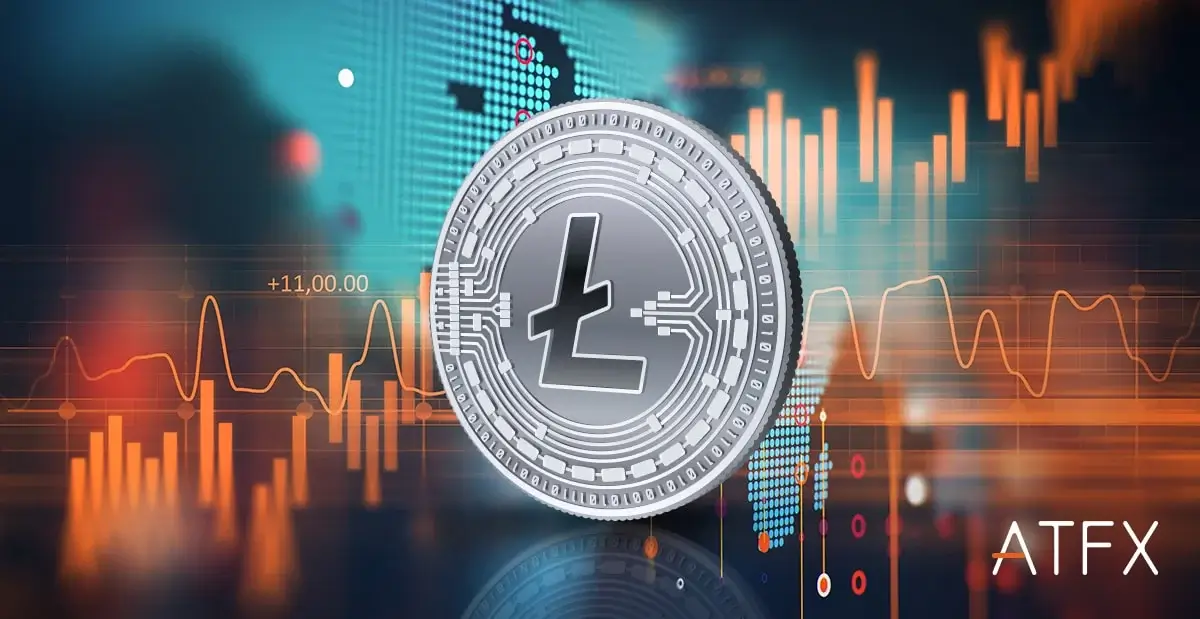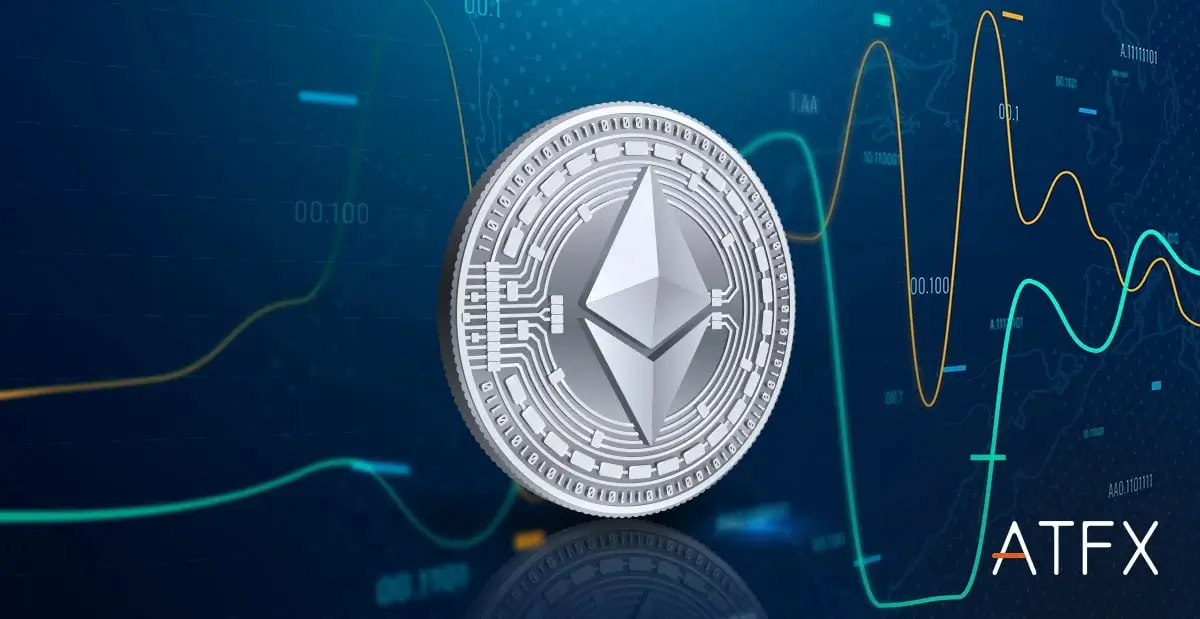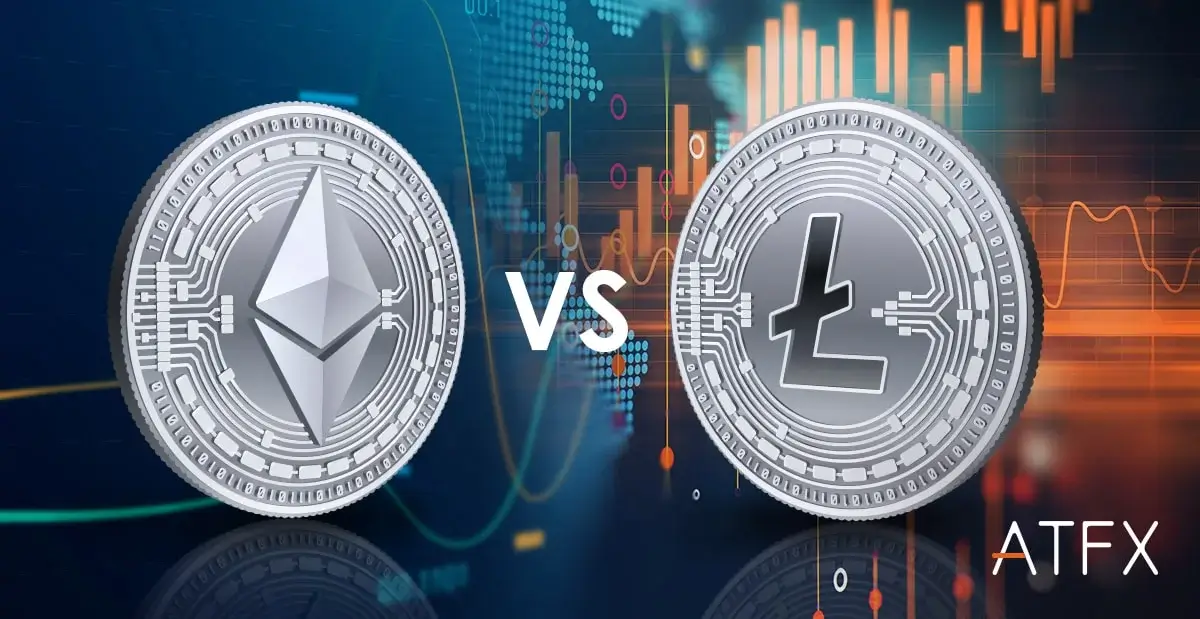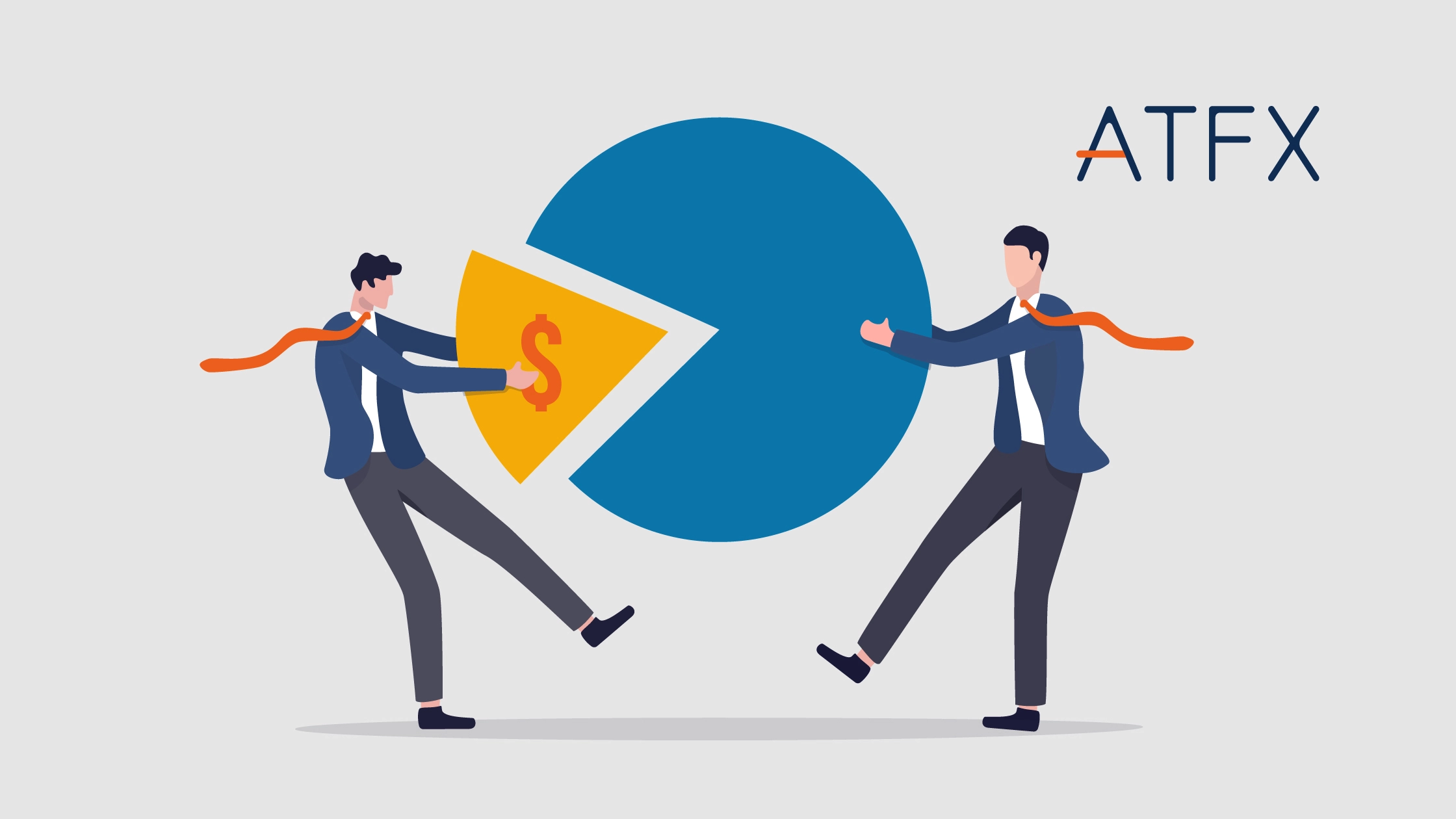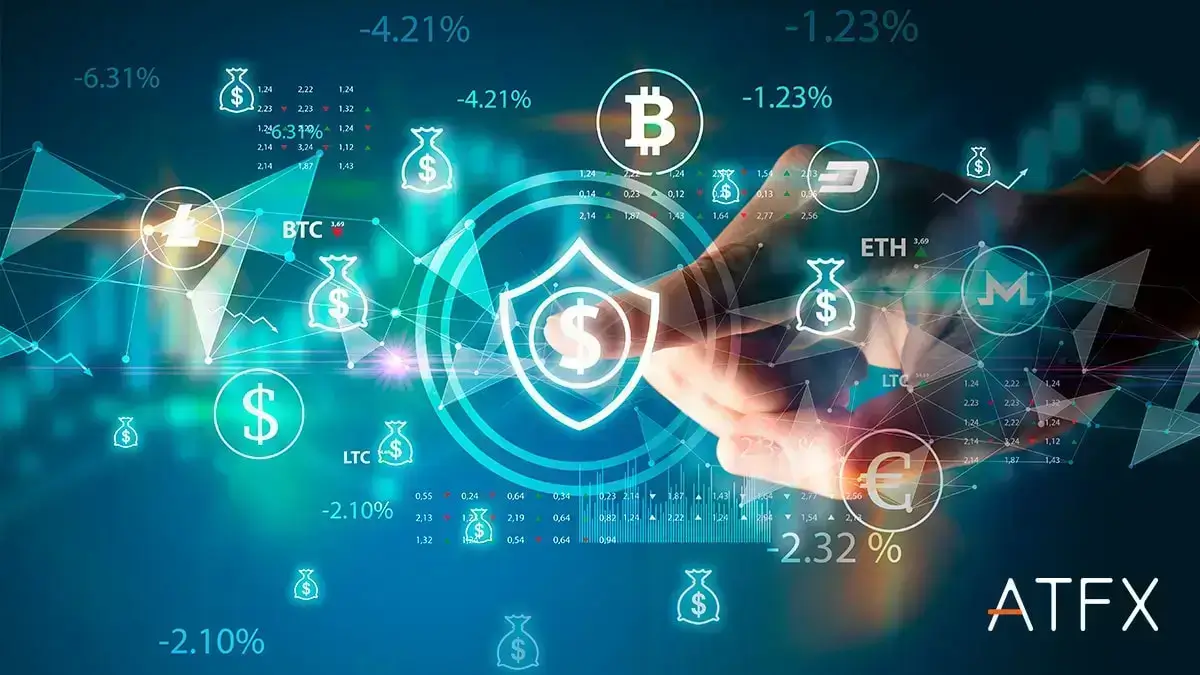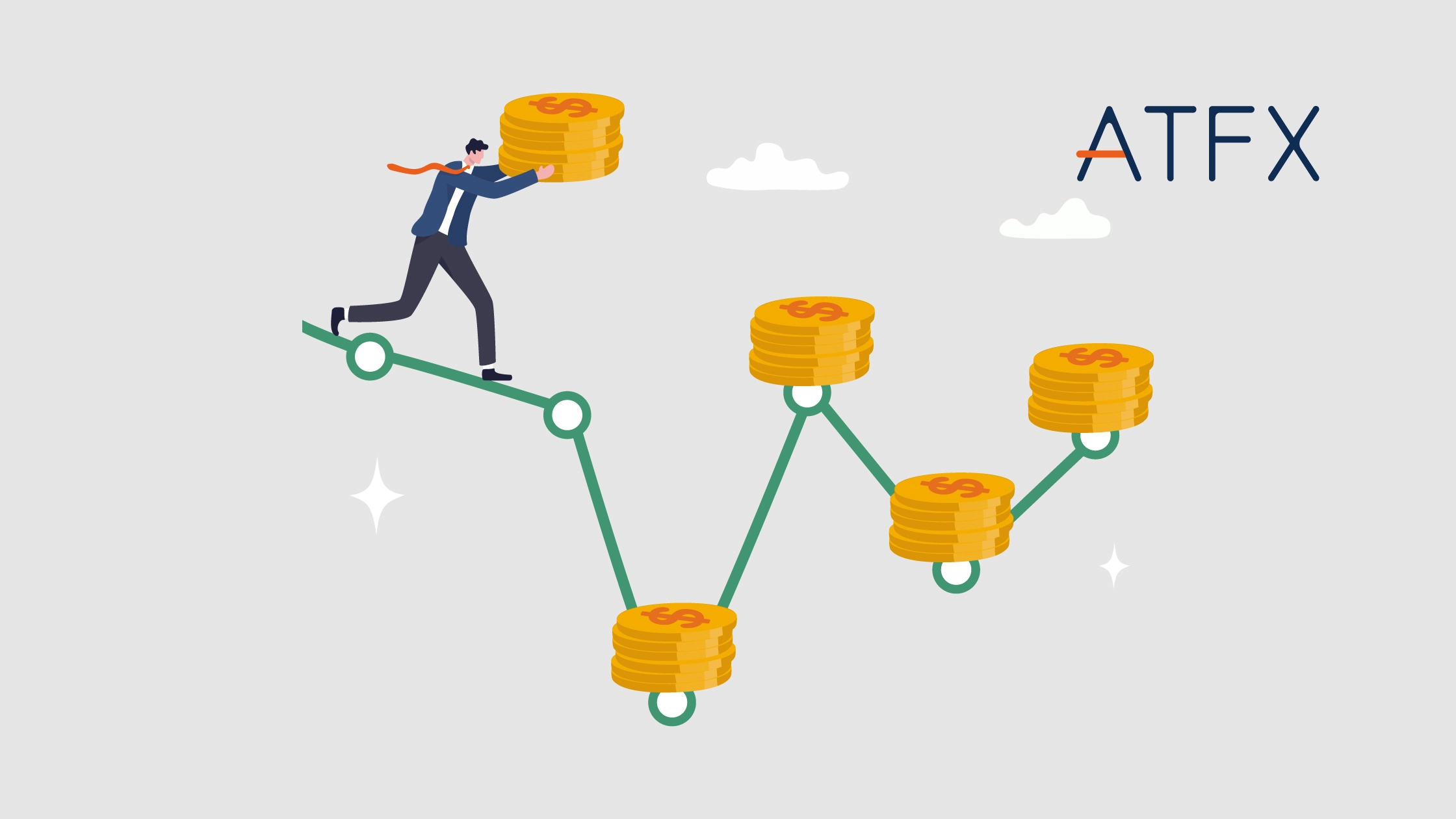Ever since Bitcoin gained popularity, there have been lots of chatter over which other cryptocurrencies will follow its success story. Litecoin and Ethereum rose to prominence in the years following the emergence of Bitcoin. However, investors, traders and market watchers all try to figure out which of the two, LTC vs ETH, if not both, is more likely to succeed in the future. Both coins have been around for almost ten years and have improved many of Bitcoin’s capabilities. They have grown into attractive investment assets.
Should you buy Litecoin or Ethereum based on their unique capabilities? What proportion of your portfolio should comprise these coins? It is easier to curve your way forward if you, first, know what makes them workable currencies and, therefore, sound investments. You are at the right place if you want to know which is better, Ethereum or Litecoin. Most of all, knowing the right one for you will help you make the right investment decisions.
Litecoin
Litecoin is a virtual currency that derived from the first created cryptocurrency, Bitcoin. The Litecoin concept is based on providing peer-to-peer digital cash. You can guess that Litecoin is meant to be a “lighter” version of Bitcoin from the name. From that perspective, Litecoin was envisioned as a faster Bitcoin version that provides secured transactions at lowered transaction fees. To a significant part, Litecoin’s primary purpose is to give you quick and affordable digital transacting.
In its current version, the Litecoin network can process up to fifty-six transactions in a second, whereas Bitcoin only manages seven transactions in a second. Transaction fees usually account for how attractive a token or coin is regarding adoption to exchange funds. Litecoin costs you peanuts as transaction fees compared to the dollars needed to execute a Bitcoin transaction. Furthermore, Litecoin does not get price spikes during times of peak network activity.
Block time is another excellent variable that endeared people to Litecoin as a friendly coin to mine. Block time is the amount of time it takes for a single batch of tokens to be validated by the network nodes. The average block time in the Litecoin network is 2.5 minutes, while Bitcoin takes 10 minutes. In summary, you can process a Litecoin transaction at lower costs, four times faster, and at 3% energy requirements of a blockchain transaction.
Litecoin is available in all cryptocurrency exchanges that are in operation. One great advantage of having the coin in many crypto exchanges is that owners can trade it between two or more exchanges. The seamless transfer makes Litecoin a suitable medium for buying other altcoins.
Which is better, Ethereum or Litecoin?
In retrospect, there are other newer tokens in circulation, each providing different solutions, but you can count on characteristics in Litecoin to keep driving more interest into the near future. The cryptocurrency networks that experience network delays during peak hours usually draw attention back to the Litecoin network. Litecoin’s success to prove reliability in maximizing utility for crypto investors keeps it a strong asset to have in a portfolio.
How to trade Litecoin
Litecoin was intended to be a worthy response to the constraints encountered during Bitcoin’s development from its technical workings. The creators introduced Litecoin as a lite version of Bitcoin and that is why both coins have many similar features. Most of the features that are not shared are just upgrades and innovative ideas that developers felt Bitcoin lacked.
Like Ethereum and Bitcoin, Litecoin is created by a process called mining. Mining involves using computer processing power to initiate and validate a set of Litecoin transactions. The cryptocurrency uses a Proof of Work (PoW) algorithm, a type of consensus algorithm applied for a blockchain network. In its raw form, the PoW algorithm boosts network safety and credibility by ensuring each participant proves to all other nodes (network participants) that they offered some computing effort.
However, Litecoin uses a slight upgrade of PoW called the Scrypt PoW algorithm. Scrypt PoW algorithm relies on blocks getting verified by mining software which is then availed to any participants who need to see it. Only once a miner has verified the block or puzzle can the next block be added to a chain. In the end, it becomes a faster and less resource-intensive way to record transactions.
How do computing power and solving puzzles translate into fortunes? The energy spent mining Litecoin is hogged by powerful processors that race to solve crypto puzzles faster than the others. Litecoin miners who solve the puzzle first and, therefore, add the new block get rewarded with a Litecoin reward of 12.5 LTC as of January 2022. The 12.5 LTC reward is expected to remain until August 2023 during the next halving period. Litecoin rewards are a solution where everyone benefits for every participant in the network because miners can make money for their work while other users enjoy network security. The product is a practical way of making peer-to-peer transactions.
Ethereum
Ethereum is a decentralized platform supporting its own programming language. Being a platform for developers to launch projects, Ethereum is well-known for its neutrality and immutability characteristics. It uses Ether (also referred to as Ethereum) as its native cryptocurrency on the blockchain platform. Ethereum is an ongoing project supported by a thriving community of developers and users who continuously improves its functionality. ETH succeeded because of its ability to combine blockchain technology for decentralized applications and the creation of smart contracts.
Ether works efficiently as the transactional token on the other operations hosted on the Ethereum network. So even though there are financial apps and some more tokens running on Ethereum, you can count on Ethereum to win the ETH vs LTC debate if you just want to finance your developer projects.
As much as ETH is the designated cryptocurrency of the network, it makes more sense to refer to ETH as the fuel needed to operate anything on the network. The ‘fuel’ analogy gives the coin a deeper meaning because the coin facilitates and keeps a record of all transactions on the platform.
How to trade Ethereum
Ethereum offers a permissionless and open-source platform that relies on the proof-of-work consensus algorithm. Its token, Ethereum (ETH), serves two main purposes:
- Ethereum works as a digital currency that anyone can use on digital exchanges.
- Ethereum is also needed as collateral to run applications on the Ethereum network.
The Ethereum network is hosted on a decentralized network of computers that run a distributed ledger. Therefore, the Ethereum blockchain manages and tracks changes or makes all updates to the currency. It is an effective blockchain that keeps all the transactions because network participants are the ones in charge of verifying the transactions and maintaining the data integrity.
Decentralization is one of the network’s appealing characteristics because users can exchange money without the need to have a managing intermediary such as a central bank. Omitting central banks from the picture also means that members can exchange the currency autonomously without any central bank interference. Ethereum transactions are publicly verifiable without having to disclose the people transacting.
Miners use a transaction validation method called proof of work (PoW). Ethereum has used the PoW method since its inception. Like Litecoin and Bitcoin, Ethereum miners also need to be the first ones to solve complex mathematical puzzles to add a single block to the Ethereum blockchain. However, things are about to change for Ethereum because the platform is about to adopt a proof of stake (PoS) form of validation. In the PoS method, someone can mine or validate transactions based on their existing coin ownership. Simply put, having more coins means you have more mining power.
Ethereum is a trailblazer in the cryptocurrency field because it offers three unique qualities including:
- Smart contracts
- Ethereum can host Decentralized finance applications (DeFi).
- Most Non-fungible tokens (NFTs) are nested on the Ethereum blockchain.
What are the 3 Similarities between Litecoin vs Ethereum?
Litecoin and Ethereum each tell an amazing story of how they came to be. Being two of the earliest Altcoins ever to exist, you can expect them to have been based on concepts aimed at solving similar problems. Here are some characteristics that make Litecoin and Ethereum similar.
Speedy transactions
Even though Bitcoin transactions are processed faster than traditional banking transfers, it still lags behind Litecoin and Ethereum. Litecoin and Ethereum enable fast transactions even if they apply different methods to achieve those transaction speeds. Fast transactions keep the currency on demand.
Both apply the PoW validation method
Since their creation, and as of January 2022, Litecoin and Ethereum both apply a mining method that works via the Proof of Work (PoW) system. The PoW system requires the use of computational power to solve a cryptographic equation for a block to be added to a chain. The cryptocurrencies may use different technical approaches, but they share one ultimate rule of PoW. The rule remains that an attacker needs to achieve 51% of a network’s computing power to breach blockchain security.
Ethereum has plans to switch from the Proof of Work method to the Proof of Stake method by end of 2022. The PoS system works differently compared to PoW. Instead of miners, PoS will have validators. Unlike PoW miners who rely on computing power to validate new blocks, PoS validators will need to stake or bet some of their existing coins. Validators bet that a discovered block of transactions will be added to the blockchain.
Longevity and staying power
Did you know that a cryptocurrency or token’s value really depends on how much use the owner can derive from it? The staying power determines how well you can use a cryptocurrency as a store of value. This viewpoint made people consider Litecoin to be the silver equivalent if Bitcoin were gold. Savvy investors would not want to invest heavily in coins that would not be valuable in a few years. New traders prefer to invest in Ethereum or Litecoin because they have been around for a decade. The coins have stood the test of time and still have more functionality than other tokens that died out less than two years after launch.
When debating between Litecoin vs Ethereum in the long term, Ethereum takes the trophy because of its extensive and still-growing use cases. Think of Ethereum as a global supercomputer that will attract the next generation of decentralized app developers. The developers need computing power and will drive demand for ETH.
What are the 5 Differences between Litecoin vs Ethereum?
Litecoin and Ethereum both have significant differences that you should know about. These are to do with technical workings and how they execute their purpose. Knowing about them helps you understand them better as investment assets.
Ethereum is more than a coin – it’s a platform
Ethereum is a blockchain platform that supports Ether (ETH) as a currency. On the other hand, Litecoin is just a cryptocurrency that needs to operate on a separate blockchain platform. With Ethereum as a platform, it has a major advantage over other cryptocurrencies because it can support other applications and development projects within its own network. On the other hand, Litecoin was created purely from the image of Bitcoin, albeit with a few differences to boost its usability. Litecoin’s only goal is to help peers transfer coins safely and swiftly.
Ethereum supports smart contracts
Ethereum’s most unique characteristic is it supports smart contracts. Bitcoin and Litecoin only support basic contracts, but these are too restrictive if their uses are compared to Ethereum. Transactions are smart contracts if the network can only approve them when a set of conditions are met. An example of a smart contract is when the network is required to approve transactions only if an accompanying digital signature proves coin ownership. Ethereum makes smart contracts possible because developers can use computer language instructions to write any kind of transaction conditions that they can imagine. Think of smart contracts as checkout pages in a shopping website. A website will let you choose your list of items and only complete your orders if you pay the required amount.
- Supply limits
To ensure that tokens maintain scarcity, their creators usually set limits or rules that determine how many exist in circulation at a given time. Litecoin has a limit cap of 84 million tokens. The limit means that at a point in the future, there will be no more tokens created once there are 84 million Litecoin’s. Ether chooses to have no limit on the tokens that can be created. There is an indefinite period within which ETH can be mined. However, the difference is achieved in scarcity controls. For example, an infinite number of ETH coins can be mined over a lifetime, but there are strict controls about how many can be mined in a single year.
Ethereum only allows a maximum of eighteen million new ETH coins to maintain a supply growth model in a year. Having a supply growth model ensures that future generations get a steady supply of coins while still enjoying its demand incentive. The supply growth model still factors in a percentage loss rate to balance the number of coins lost over time. Like all traditional currencies, coins disappear from circulation due to death or carelessness.
- Different block times
The block time refers to the time taken to mine a single block. The block time for Ethereum vs Litecoin varies substantially. It takes at most 15 seconds to mine one Ether block while Litecoin’s block takes 2 minutes and 19 seconds. Eventually, this means more transactions can be validated in a minute, and a new Ethereum block is created compared to Litecoin.
Proof of Work vs Proof of Stake
Litecoin mining is done using the Proof of Work (PoW) verification method. The PoW method requires individual miners to provide computing power to solve cryptographic problems. While Litecoin is set to remain with the Proof of Work method, Ethereum is shifting to a Proof of Stake (PoS) method in 2022. The PoS method is a more energy-efficient consensus mechanism than PoW.
Which one between Litecoin and Ethereum should you invest?
The fundamentals on Litecoin and Ethereum all look impressive, and their prices have shown good returns through the years. If it boils down to market cap, Ethereum is almost five times that of Litecoin. On the other hand, if you look at the prices only, Litecoin is five times more than Ethereum. It is easy to take the straightforward way out and pick a single coin based on its performance in one comparison. However, you would not want to be the guy that does that! So, the provocative question remains, should I buy Litecoin or Ethereum? None of the coins is superior to the other!
Shrewd investors should pick a combination of the two cryptos to diversify their portfolios. You can invest in Ethereum or Litecoin in a manner that reduces volatility risks and enjoy decent returns over time. With time, you can tactfully adjust the portfolio to tweak it to optimum levels.
Conclusion
Your new journey as a crypto trader should not be difficult if you know where to look. However, it gets exciting if you understand how to respond to new Ethereum and Litecoin market developments and adjust those to your investment interests. One ‘asset’ that will never let you down is practice! Demo trading is an excellent way to polish your trading skills and get a rhythm of the markets.
Opening a demo trading account at ATFX is free, and it only takes a few easy steps. You can also ping the 24/5 customer service team and get any additional guidance you may need about setting up your account to begin right away!
